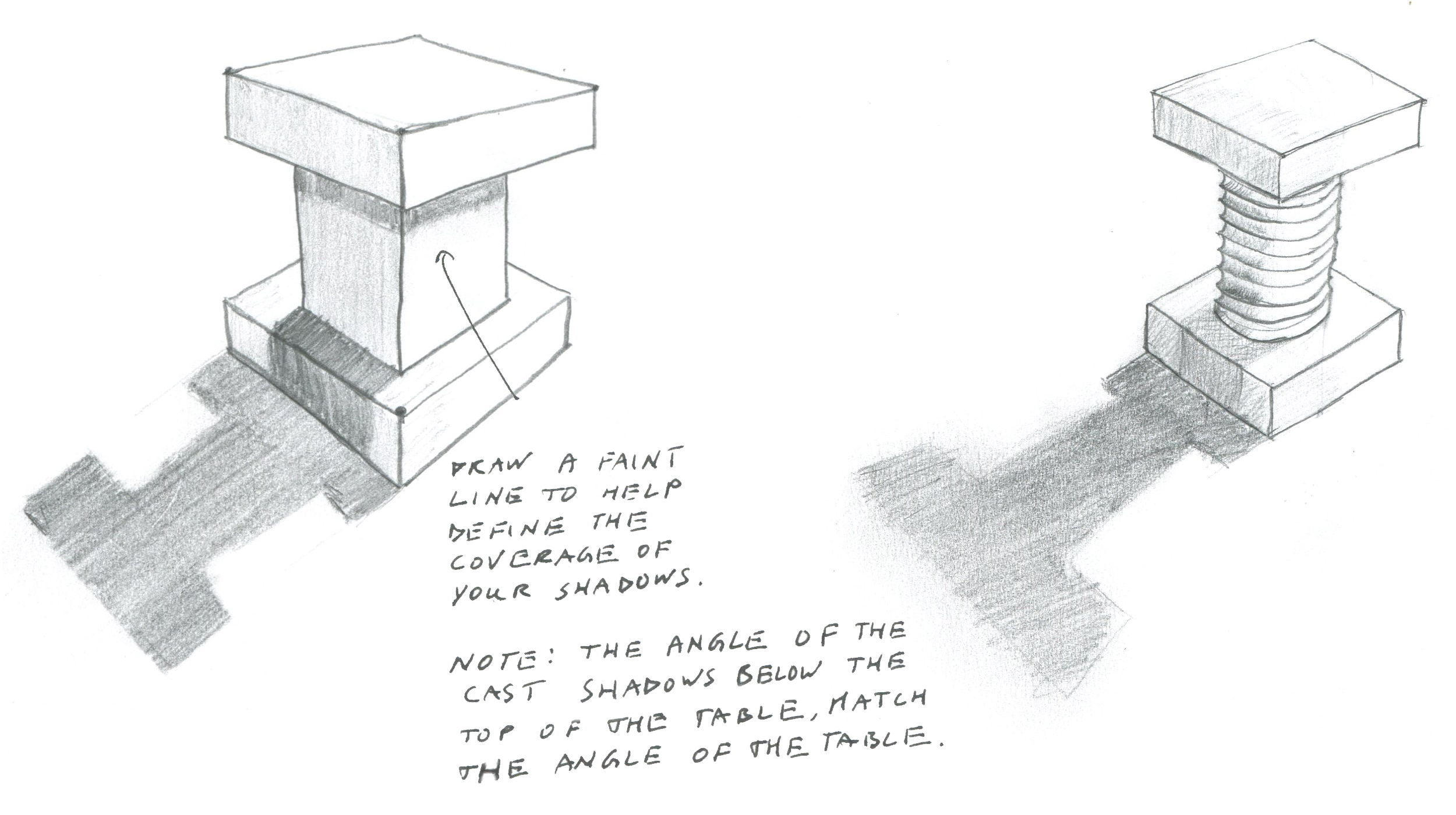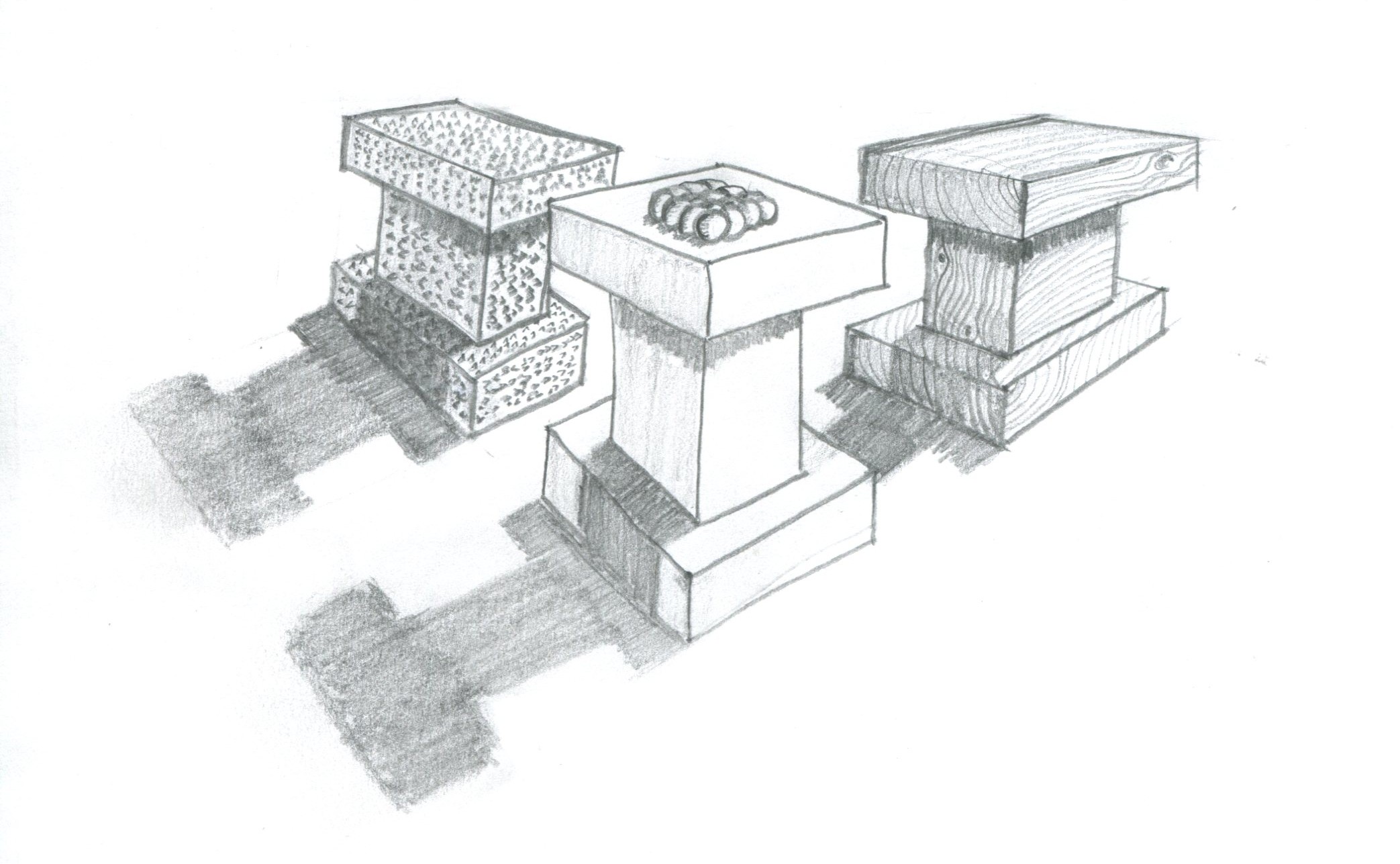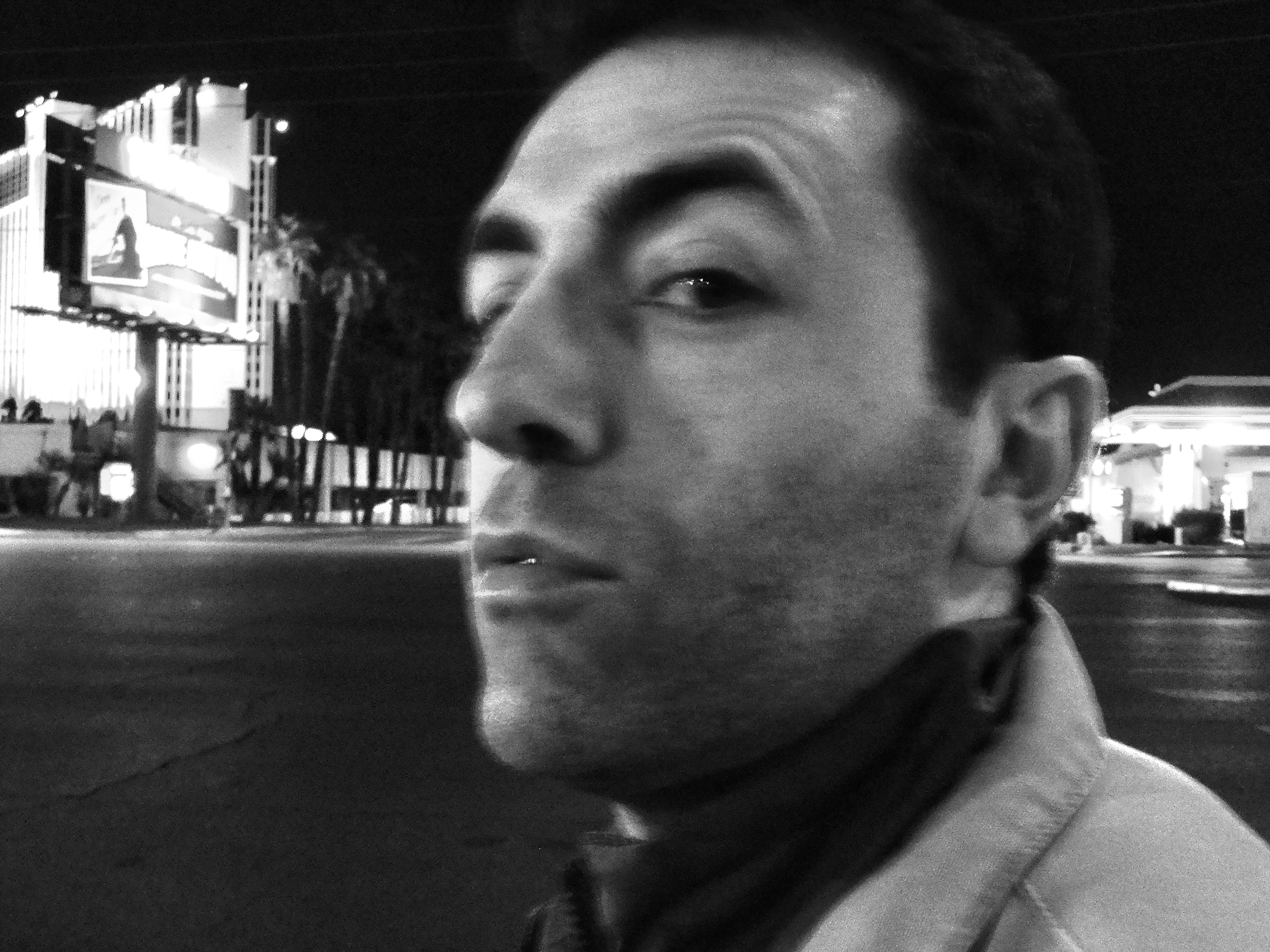Now that we can draw cubes, this chapter teaches us how create a little more complex objects. Personally, I think the ‘stacking tables’ are more like a square columns, regardless, they are super cool objects that can be used to create a lot of interesting visual patterns when they are repeated and manipulated.
For example, for the leg, you can use a cylinder instead of a rectangle and create a column. Or, in my example below [icon name=”arrow-circle-down” class=”” unprefixed_class=””], a nut & bolt.
The Missing Cast Shadow?
For some reason, in the book, the cast shadow from the supporting leg of the table on the bottom platform+floor is missing. I’m not sure if it’s me or it’s a mistake.
Is that a Ruler?

Semi-transparent Blue Rubber Ruler
It’s time to confess. I’ve been using a small rubber ruler to draw longer lines. There, I feel much better now. In my defence, I’ve been—mostly—using it to draw the horizon. Also, if you haven’t noticed yet, my drawings tend to slope down on the right side (see the wall of the dungeon). Sometimes I use the ruler to check my perspectives for longer lines, as they tend to cause more headaches if they’re not straight.
Textures & Tables
For the bonus round in this chapter, I wondered how different my drawing would look if I used a ruler to draw my lines for one of the tables. The lines for the table on the right were drawn using a ruler, vs the other two on the left which were free-hand. I used the 2-point perspective technique in drawing the table on the right, but not the ones on the left. I learned about the 2-point perspective technique in my only Art class when I was 12. That’s the extent of what I remember. But it is an amazing tool and you NEED a ruler to use it properly. Unless you can draw perfectly straight lines.
The Pyramid of Spheres
Feeling a little more adventurous, I wanted to build a stack of spheres like a pyramid because it was so much ‘fun’ drawing the triangular formation on Day 3. After I drew the pyramid, I thought, “wouldn’t it be neat if the spheres were sitting on top of another structure?”.









 From creating WordPress themes to server architecture; I bring over 20 years of experience in Web/application development to my clients. Like the Web, my skill-set is constantly changing to adapt to new technologies and methodologies in delivering results. I'm a firm believer in using well-established standards to ensure longevity and flexibility for all my projects.
From creating WordPress themes to server architecture; I bring over 20 years of experience in Web/application development to my clients. Like the Web, my skill-set is constantly changing to adapt to new technologies and methodologies in delivering results. I'm a firm believer in using well-established standards to ensure longevity and flexibility for all my projects. 
